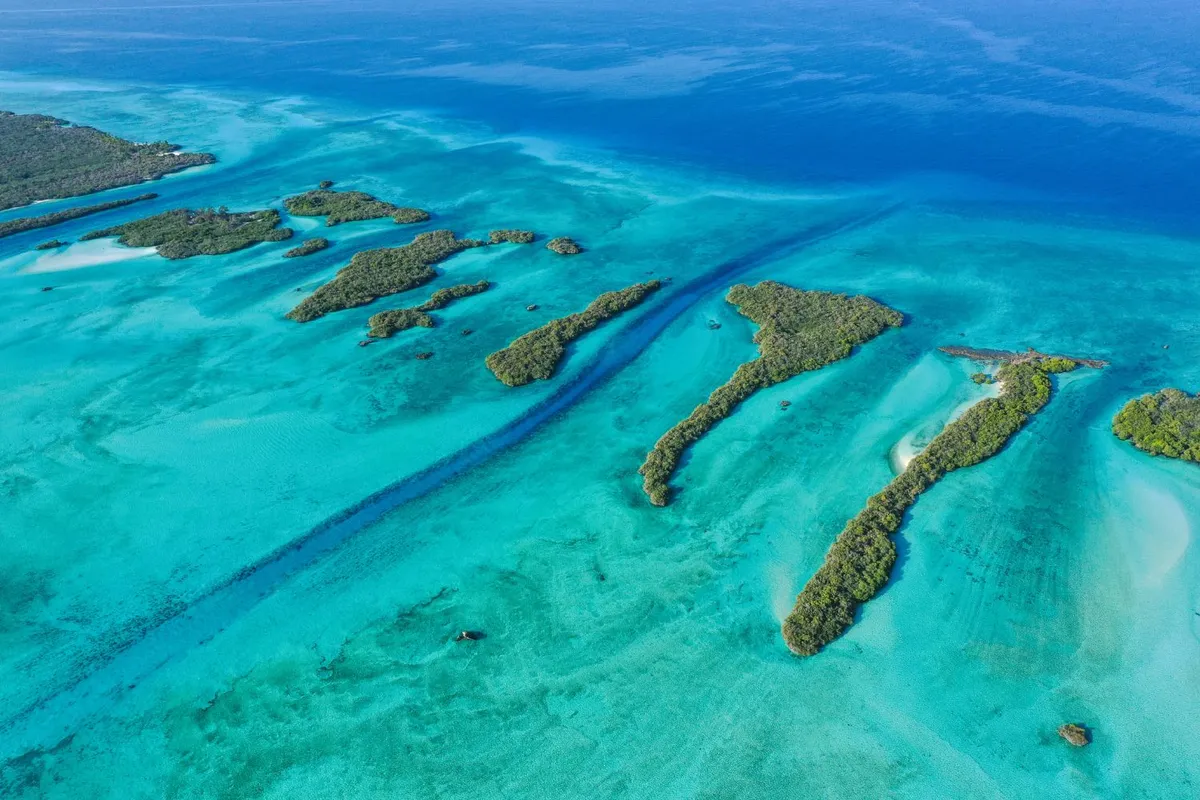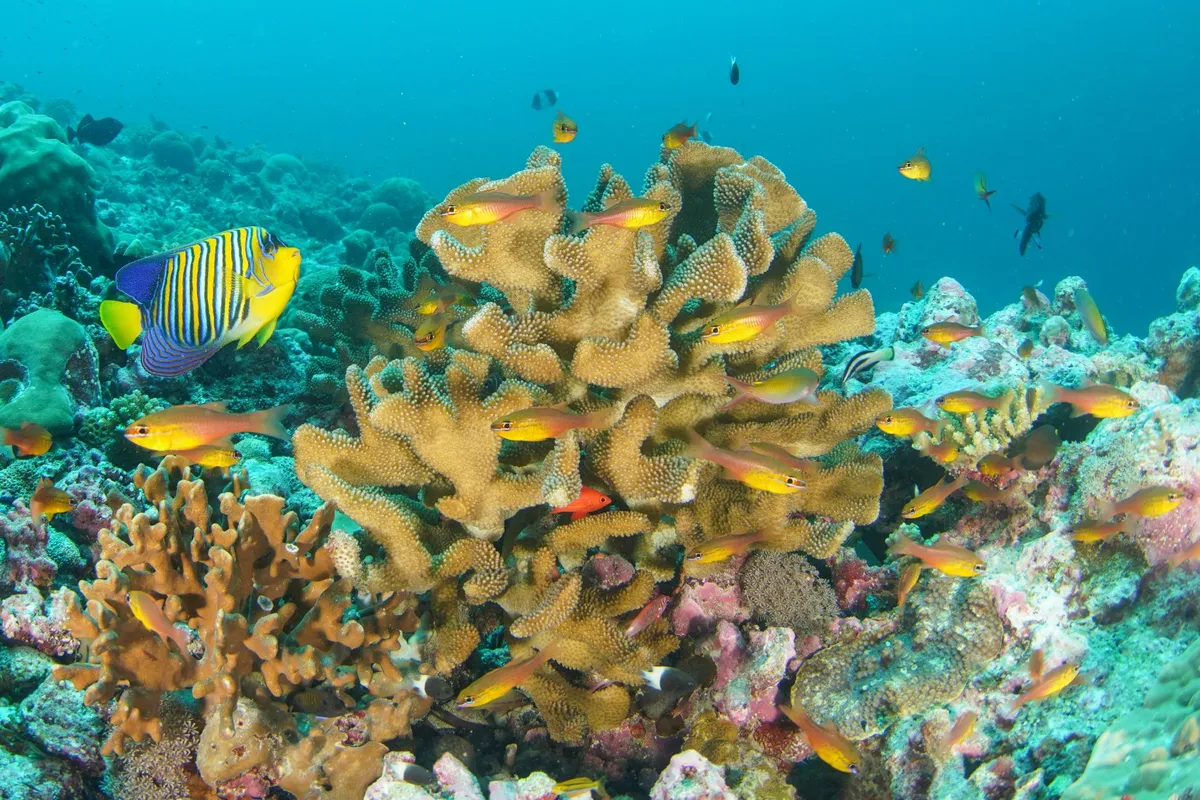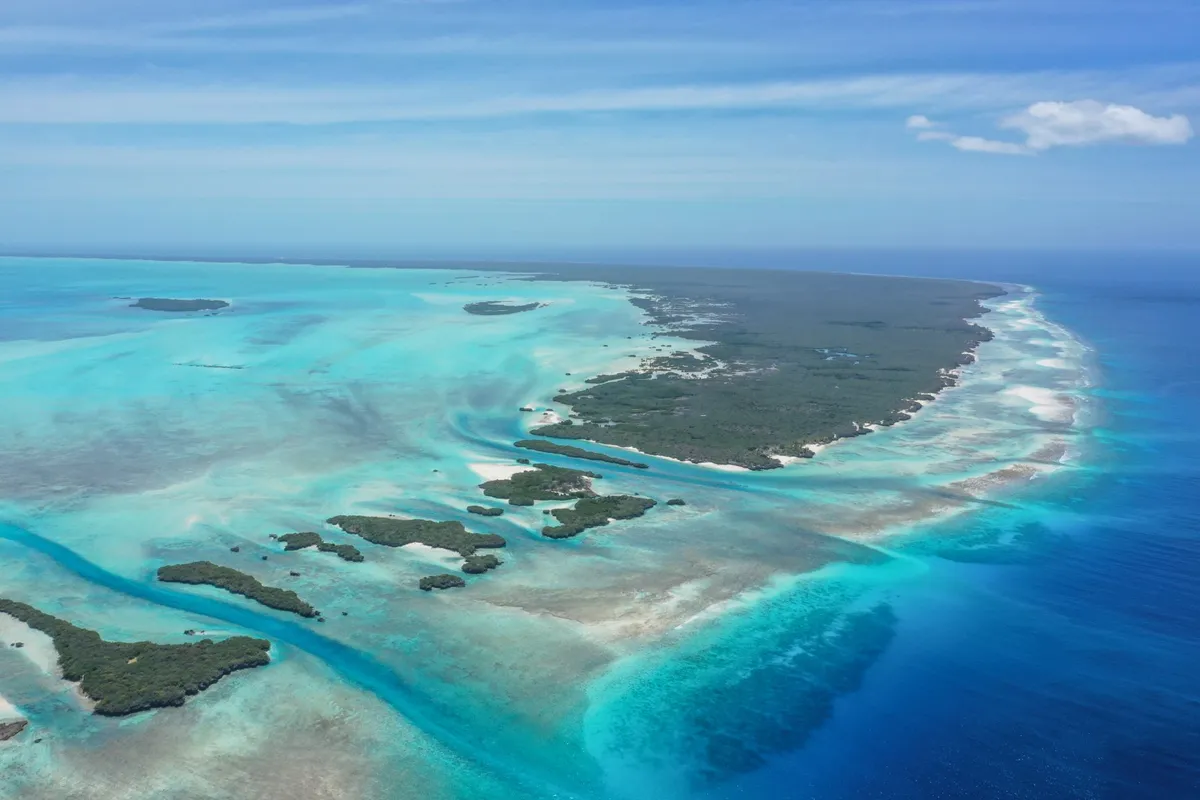The Indian Ocean is scattered with more than one million square kilometres of remote coral reefs. Now, new research based on genetic analyses and oceanographic modelling suggests that these reefs are closely related thanks to a network of ocean currents that transports huge quantities of coral larvae between the islands.
A key factor in reef recovery is larval supply, making the discovery of this 'coral superhighway' an important one, say researchers from the University of Oxford, who led the study (published today in Scientific Reports).
- 100 new ocean species discovered off the coast of New Zealand
- Scientists have developed an amazing new technique to restore coral reefs
- Giant prehistoric sea lizard with dagger-like teeth discovered in Morocco
- Incredibly rare giant turtle with a face like a frog found in India's tropics

"This discovery is very important because a key factor in coral reef recovery is larval supply," says lead author of the study Dr April Burt (Department of Biology, University of Oxford, and Seychelles Islands Foundation).
"Although corals have declined alarmingly across the world due to climate change and a number of other factors, actions can be taken at local and national scale to improve reef health and resilience.
"These actions can be more effective when we better understand the connectivity between coral reefs by, for instance, prioritising conservation efforts around coral reefs that act as major larval sources to support regional reef resilience."

Discovering the 'coral superhighway'
Working alongside coral reef management organisations and the Seychelles government, University of Oxford researchers collected coral samples from 19 different reef sites around the islands.
An in-depth genetic analysis revealed recent movement of genes between all sample sites, possibly within just a few generations. The finding suggests that coral larvae may be frequently transferred between different populations.
Following the genetic analyses, researchers then used oceanographic modelling to simulate the process of larval dispersal, offering a clear visualisation of the pathways coral larvae take between reefs.
The combination of the genetic analyses and oceanographic modelling revealed that dispersal of coral larvae directly between reefs across the Seychelles is highly plausible.
The paper states that while long-range dispersal events are possible, it's probably more likely that connectivity between remote islands across the Seychelles is established through ‘stepping-stone’ dispersal. This suggests that the Seychelles' central reefs, and possibly those around East Africa, may play an important role in linking the most remote islands.

"This research suggests that the broad agreement between predicted connectivity and observed genetic patterns supports the use of such larval dispersal simulations in reef system management in Seychelles and the wider region," says Dr Noam Vogt-Vincent (Department of Earth Sciences, University of Oxford, now based at the Hawai’i Institute of Marine Biology) who led the oceanographic modelling.
"These simulations also allow us to investigate how regular these connectivity patterns are in time, because a regular larval supply will be essential for reef recovery in the face of climate change."
The researchers say that this data – which can be visualised in a new app – could help identify major larval sources, which could in turn inform active reef restoration efforts.

Senior author of the study Professor Lindsay Turnbull (Department of Biology, University of Oxford) says: "This study couldn’t come at a more timely moment. The world is once again watching, as El Niño devastates coral reefs throughout the Indian Ocean. Now we know which reefs will be crucial to coral recovery, but we can’t pause in our commitment to reducing greenhouse gas emissions and stopping climate change."
Dr Joanna Smith and Helena Sims (The Nature Conservancy) who support the Seychelles Marine Spatial Plan Initiative concludes: "The WIO coral connectivity study, by illustrating the connectivity of reefs within a network, can be used at national and regional scales in the Western Indian Ocean for Marine Protected Area design and management, as well as directing restoration activities.
"We look forward to using the results and Coral Connectivity app to inform implementation of the Seychelles Marine Spatial Plan."

The study ‘Integration of population genetics with oceanographic models reveals strong connectivity among coral reefs across Seychelles’ was published in Scientific Reports.
